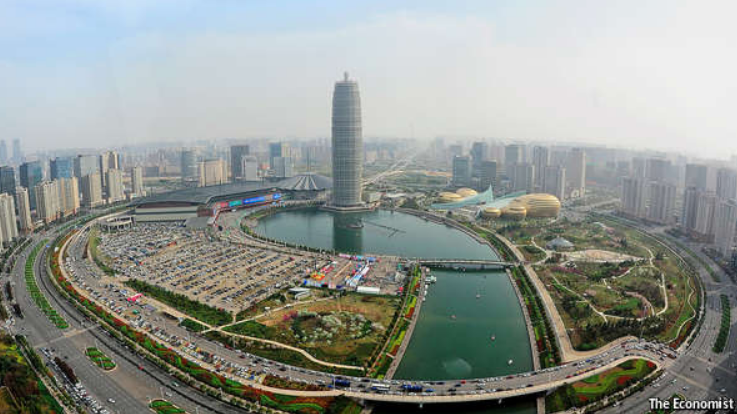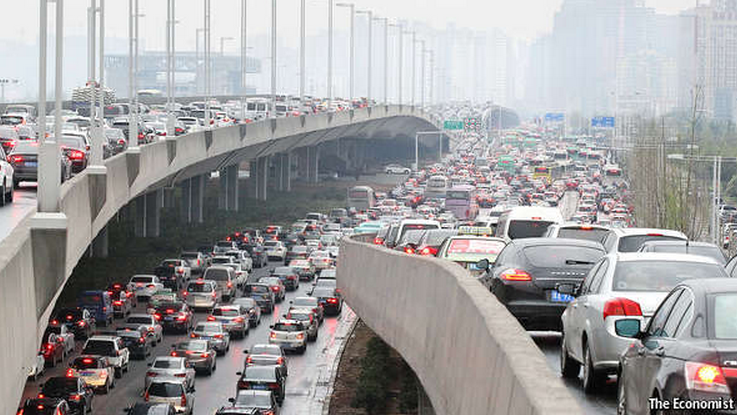Don’t be offended by the title of this post. I’d guess 99.9999999% of people don’t understand currency manipulation or quantum mechanics. So I’m using the term ‘ignorance’ loosely. And of course since I’m in the tiny minority (of seven people, based on the percentage above), there’s always the small chance that I’m the stupid one. This post is to organize my thoughts, as I’m going to be interviewed on “currency manipulation” tomorrow.
Let’s start with the term ‘currency manipulation.’ That’s what central banks do. They manipulate the nominal value of currencies. Period. End of story. On the other hand:
1. Monetary policy has no long run effect on real exchange rates. Once wages and prices adjust, real exchange rates go back to their equilibrium values.
2. In the short run, central banks can reduce real exchange rates via easy money, however . . .
a. There is little evidence that this creates a more “favorable” trade balance, for standard income and substitution effect reasons.
b. The term “favorable” is misleading, as trade surpluses do not steal jobs from other countries, they do not depress AD in other countries, for standard monetary offset reasons.
3. Real and nominal exchange rates are so different that they should not even be covered in the same course. And yet 99% of the discussion of exchange rates doesn’t even make clear which concept is being discussed.
4. Currencies can be manipulated equally well under fixed and floating exchange rates. That distinction has no importance for any policy issue that I know of. The fact that a country “pegs” an exchange rate doesn’t mean it manipulates it, except in the sense that all central banks manipulate the value of their currencies.
5. Many people focus on long run chronic current account (CA) surpluses, and regard those currencies as “undervalued”. If that’s your concern then you should focus on the real exchange rate, as the nominal exchange rate doesn’t matter in the long run. (Here I’m thinking about complaints of chronic CA surpluses in Germany, China, Japan, etc.)
6. There is no theoretical justification for assuming that long term CA surpluses imply undervalued currencies. None. At the cyclical frequency there is a Keynesian argument against CA surpluses, which I regard as beyond lame, bordering on preposterous. But for long run surpluses in China or Germany, there is no argument at all. The idea that CA surpluses help a country “develop” is laughable.
7. Monetary policy can’t generate a “undervalued currency” in the long run. It’s not clear if any government policy could, but the best argument would be that pro-saving policies could lead to lower real exchange rates and CA surplus.
8. This means that in the long run it makes no difference whether a country has its own currency or not. Germany and the Netherlands can “manipulate” their real exchange rate just as easily as Britain, even though they lack their own currency. They can do so (if at all) by implementing pro-saving policies.
9. Any pro-saving policy will do, it makes no difference whether the government buys foreign bonds, domestic bonds, or domestic stocks. If Germany stops taxing capital gains, that will boost domestic saving. If Singapore and Norway create sovereign wealth funds for future retirees, that’s pro-saving. And of the PBoC buys lots of Treasuries bonds at a fixed currency peg, that’s pro-saving. It’s impossible to say that one country “manipulated” its currency more than the other. But that doesn’t stop 99.9999999% of people, including most economists, from pointing at China.
So basically nobody knows what currency manipulation is, or how to identify it. Almost no one understands the crucial difference between real and nominal exchange rates. No one seems to understand that all central banks manipulate nominal exchange rates, and in the short run, real exchange rates. No one understands that currency manipulation has nothing to do with fixed vs. floating rates. No one understands that (in the long run) eurozone countries can manipulate their currencies (real exchange rate) just as easily as countries with their own central bank. No one understands that currency manipulation may not even affect the CA in the short run, or that changes in the CA don’t affect AD in other countries.
And yet there is room for hope! Despite this tale of woe, all is not lost. It turns out that complainers are paper tigers. Countries are often falsely accused of currency manipulation, but no one ever does anything about it. Is that because they secretly know I’m right? Don’t make me laugh. They are cowards, thank God. The Great Depression and WWII made countries more passive. I hope they stay that way.
PS. The real exchange rate is the nominal rate (value of domestic currency) times the domestic price level, divided by the foreign price level.
PPS. Do I still believe in the wisdom of crowds, despite 99.9999999% being wrong? You bet I do! I believe that if the Fed “manipulates” the dollar lower at the next FOMC meeting, foreign stock markets will rise, despite our “beggar thy neighbor” policy. People are stupid but markets are very, very wise.



